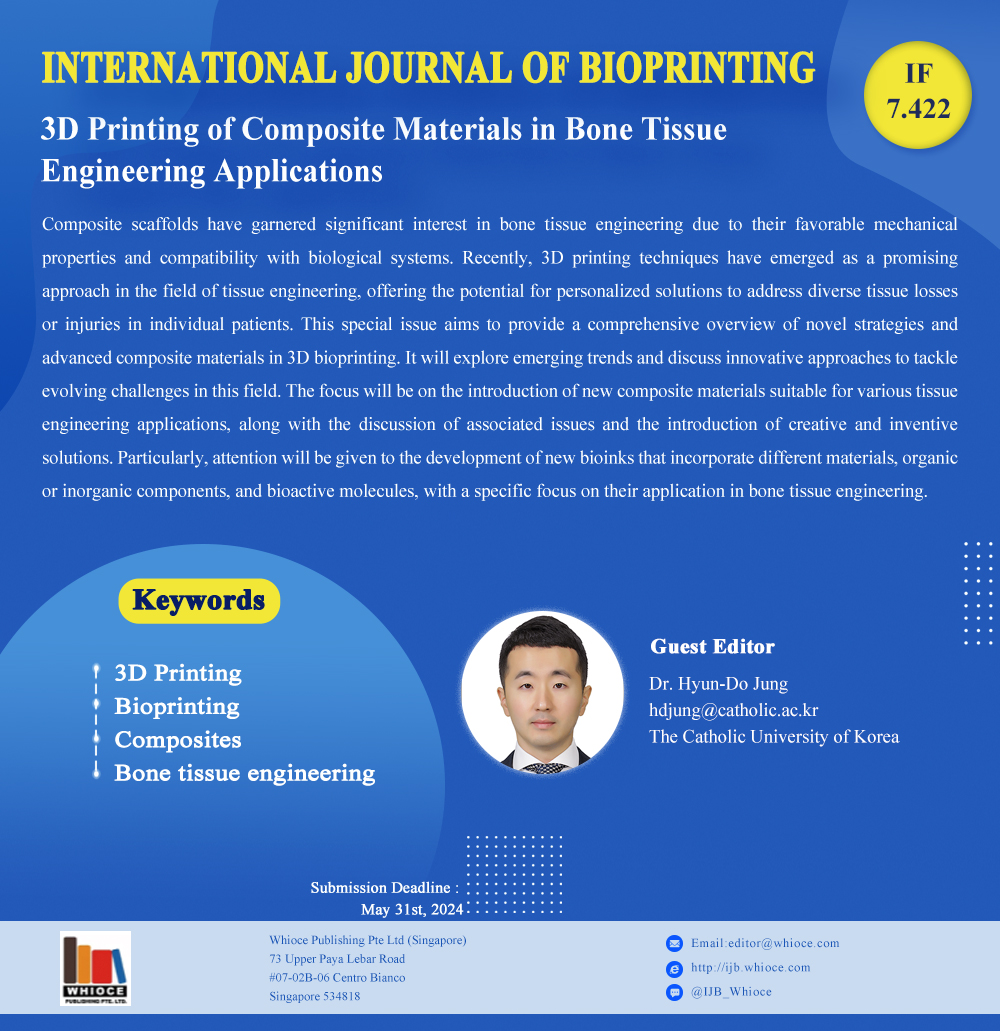
Composite scaffolds have garnered significant interest in bone tissue engineering due to their favorable mechanical properties and compatibility with biological systems. Recently, 3D printing techniques have emerged as a promising approach in the field of tissue engineering, offering the potential for personalized solutions to address diverse tissue losses or injuries in individual patients. This special issue, titled "3D Printing of Composite Materials in Bone Tissue Engineering Applications," aims to provide a comprehensive overview of novel strategies and advanced composite materials in 3D bioprinting. It will explore emerging trends and discuss innovative approaches to tackle evolving challenges in this field. The focus will be on the introduction of new composite materials suitable for various tissue engineering applications, along with the discussion of associated issues and the introduction of creative and inventive solutions. Particularly, attention will be given to the development of new bioinks that incorporate different materials, organic or inorganic components, and bioactive molecules, with a specific focus on their application in bone tissue engineering.
Biomechanical analysis of partial mandibular implants with various lattice designs of different material properties: In vitro study and finite element analysis


